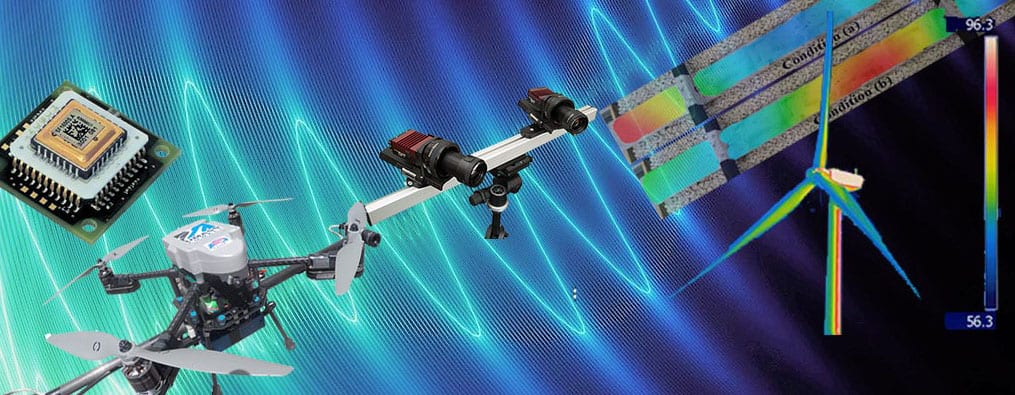
Bridges are typically designed to have a lifespan on order of 50 years; therefore, bridge monitoring is important since many of them are near to or have already exceeded their design life. Conventional sensors and examination techniques such as accelerometers and strain gages produce results at only a discrete number of points. Visual inspection only provides qualitative information and is subject to human variability and inconsistencies between inspectors. Moreover, both approaches are labor intensive and time consuming.
To couple with these problems and make bridge inspection more accurate and easy to perform, a system for providing accurate crack-displacement measurements, over several areas of concrete bridges using the three-dimensional (3D) Digital Image Correlation (DIC) technique is proposed in this study. In particular, the feasibility of performing this type of measurements using a set of cameras installed on an unmanned aerial vehicle (UAV) for remote data acquisition is investigated. This research represents the first attempt to merge two well-known technologies (i.e. 3D-DIC measurements and UAVs) for performing structural investigations on bridges.

Results of extensive laboratory tests and long term monitoring performed on two concrete bridges (still in service) show that the proposed system can measure a crack’s relative motion characterized by displacement as small as 10-5 meters and with a resolution commensurate to other commonly used measurement techniques. An example of a 10-month long monitoring performed on a hairline crack to measure the contraction and expansion phenomena of cracks and joints is shown in the image below. It can be observed that the results show that the crack tends to contract through the whole winter period and the spring, while an opposite trend is shown in the warmest months.

The research has demonstrated that measurements made using the UAV system does not significantly affect the precision of standard 3D-DIC measurements. This research contributes to the overarching goal of developing a SHM system that can accurately monitor the condition of bridges, provide quantifiable measurement results, and minimize the interference with infrastructure functionality.
The publications describing the details of this research can be downloaded using the following links:
